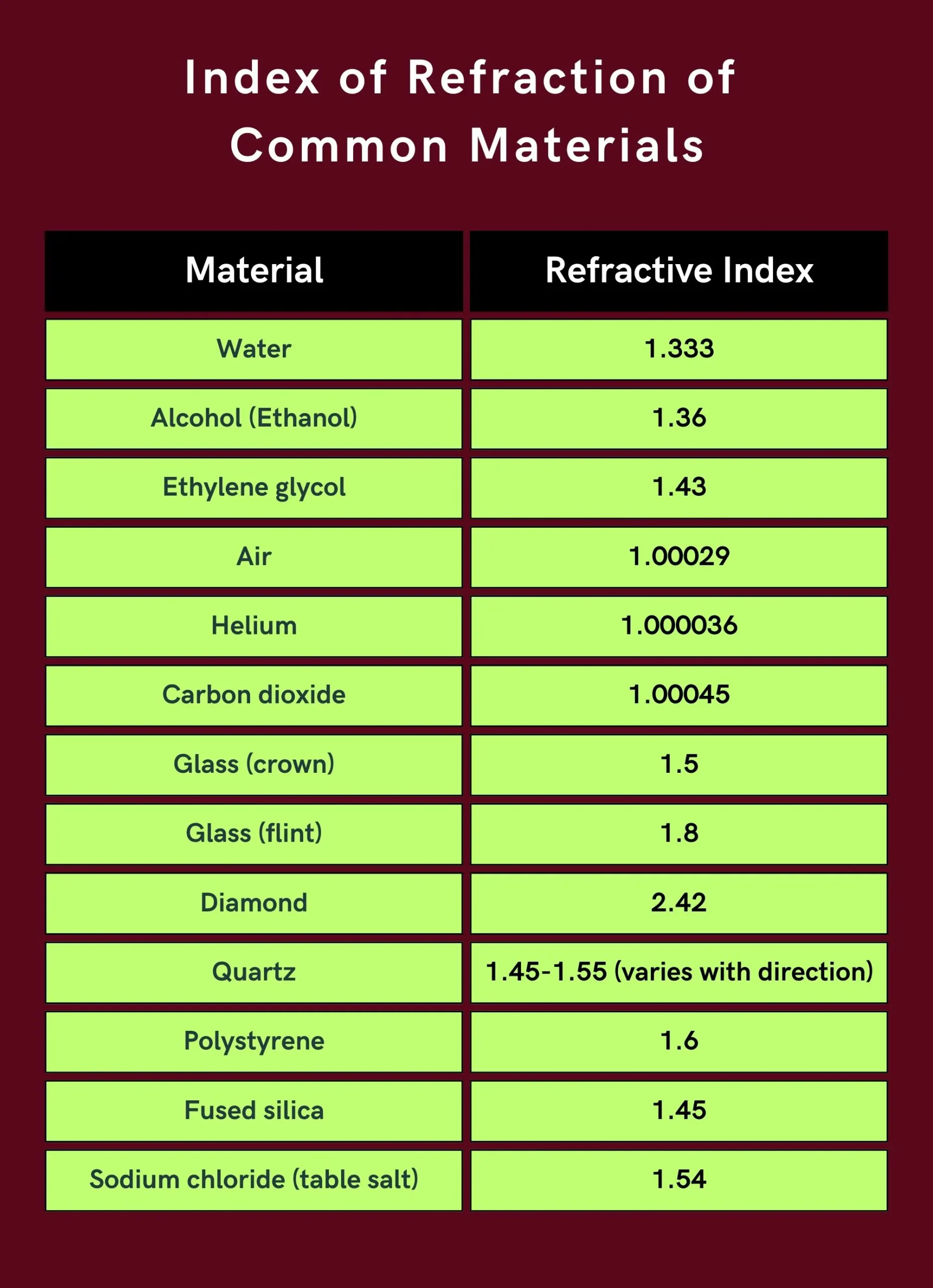This calculator helps you determine the refractive index, a property that tells us how light bends when it travels between different materials.
Here’s how to use it:
- Choose a mode: Select “Relative” if you know the speeds of light in two materials or “Absolute” if you know the speed of light in one material.
- Enter speed values: Depending on the mode you chose, enter the speed of light in the first medium (e.g., air) and, optionally, the speed in the second medium (e.g., glass). Select the corresponding units (m/s, km/s, etc.).
- Calculate: Click the “Calculate” button.
- Read the result: The calculator will display the refractive index for the second medium based on the information you provided.
Here are the index of refraction of common materials you can compare and calculate easily

Formula and Calculation:
The refractive index (n) is calculated using Snell’s Law:
\(n_1sin(\Theta_1)=n_2sin(\Theta_2)\)
Where:
- n₁ is the refractive index of the first medium (usually air, n₁ ≈ 1)
- θ₁ is the angle of incidence (the angle at which light enters the first medium)
- n₂ is the refractive index of the second medium (what we’re trying to find)
- θ₂ is the angle of refraction (the angle at which light bends in the second medium)
This calculator simplifies the process by assuming a specific angle of incidence (usually 90 degrees) and solving for n₂ based on the provided speed information. The speed of light is related to the refractive index and the material’s properties through another equation. The calculator uses these relationships internally to determine the refractive index.
Feel free to play around with different values and see how the refractive index changes!




